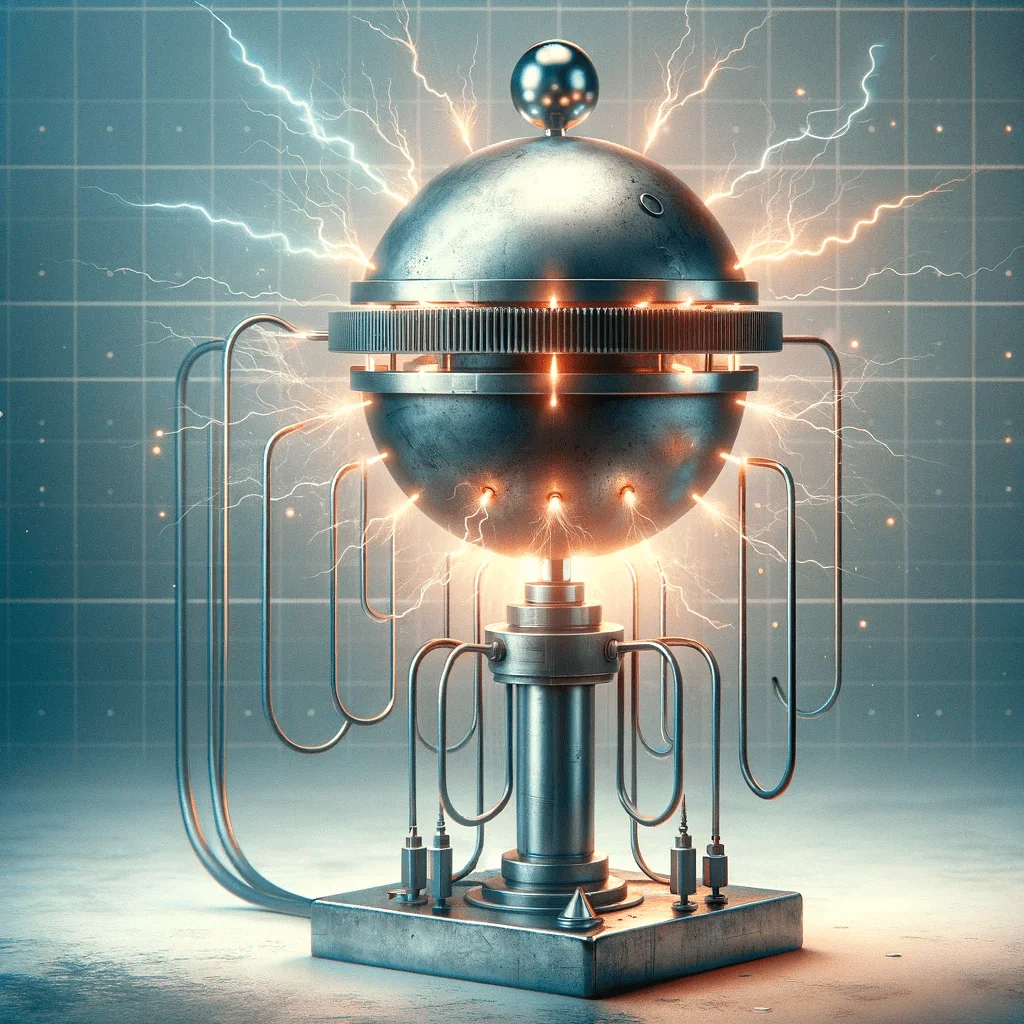Van de Graaff Generators

Van de Graaff generators are fascinating pieces of scientific equipment that have been sparking curiosity and imagination for almost a century. Invented in 1929 by the American physicist Robert J. Van de Graaff, these machines were originally designed to accelerate particles to high energies for nuclear physics experiments. Today, they are commonly found in science museums and school laboratories, where they continue to provide a hands-on experience with the principles of electrostatics.
The basic structure of a Van de Graaff generator consists of a large metal sphere, a moving belt made of an insulating material, and two comb-shaped electrodes. The generator operates on the principle of electrostatic induction, a phenomenon discovered by the English scientist Michael Faraday in the early 19th century.
Here’s how it works: When the generator is turned on, the lower comb-shaped electrode, which is connected to a power supply, sprays negative charges onto the moving belt. These charges are then carried up to the top of the generator, where the upper comb-shaped electrode collects them and deposits them onto the large metal sphere. As more and more charges accumulate on the sphere, its voltage increases, creating a strong electric field around it.
This electric field can become so intense that it ionizes the air around the sphere, causing it to break down into its constituent ions and electrons. This breakdown results in the visible spark that Van de Graaff generators are so famous for, and which can be used to demonstrate the power and properties of static electricity.
The general rule of thumb for air breakdown (the point at which a spark can form) is that it occurs at approximately 3,000 volts (3 kV) per millimeter or around 75,000 volts (75 kV) per inch in dry air at sea level. This is often cited as Paschen’s law, which relates the voltage necessary to start a discharge or spark between two electrodes in a gas as a function of pressure and gap length.
According to “The Physics of Everyday Phenomena” by Griffith and Brosing, Van de Graaff generators can reach voltages of up to several million volts. This makes them some of the highest-voltage machines that exist, all while being safe to touch due to the low current they produce.
While many people think of Van de Graaff generators as purely educational tools, they have important applications in industry and research. For example, according to the Institute of Physics, Van de Graaff generators are used in particle accelerators to generate the high voltages needed to accelerate particles to nearly the speed of light.
Despite their importance, Van de Graaff generators are often misunderstood. For instance, a common myth is that they work by friction, with the moving belt rubbing against the comb-shaped electrodes to generate static electricity. However, as mentioned earlier, they actually work by electrostatic induction, not friction.
While Van de Graaff generators can produce high voltages, the current they generate is extremely low, making them unsuitable for such applications.
In order to understand why Van de Graaff generators are unsuitable for certain applications despite their high voltage output, it’s necessary to look a bit deeper into the concepts of voltage and current, and how they relate to power.
Voltage (measured in volts) is a measure of the electric potential difference between two points. It can be thought of as the ‘push’ that causes charges to move in a circuit. Current (measured in amperes, or amps) is the rate at which charge is flowing. In a typical power supply, the voltage ‘pushes’ the charges, which then flow as a current.
Power (measured in watts), which is the rate of energy transfer, is the product of voltage and current. That is, Power = Voltage x Current. So, a device’s power requirement cannot be met by voltage alone; current is equally important.
Now, back to Van de Graaff generators. These machines are designed to accumulate a large amount of charge on the metallic dome, thereby creating a high voltage. However, they do this slowly and can store only a limited amount of charge at any given time. This means that while they can generate a high voltage, the rate at which they can deliver charge (i.e., the current) is very low.
Imagine trying to fill a swimming pool with a drinking straw. The straw might be capable of creating a high pressure (analogous to voltage), but the amount of water (charge) it can deliver over a given period (the current) is extremely limited. As a result, it would take an impractically long time to fill the pool. Similarly, a Van de Graaff generator, due to its low current, can’t deliver enough power quickly enough to run electrical devices that require a significant amount of power, such as household appliances or industrial equipment.
This is why, despite their ability to generate high voltages, Van de Graaff generators are primarily used in research, demonstrations, and educational settings, where high voltage is needed but high current is not. Their ability to create spectacular sparks and cause hair to stand on end makes them perfect for demonstrating the principles of electrostatics, but their low current output makes them unsuitable for most practical power applications.
Van de Graaff generators are an amazing example of the power of electrostatics. They are educational tools, research instruments, and a testament to the ingenuity of human invention. Whether you’re a student learning about electricity for the first time or a seasoned scientist conducting cutting-edge research, these machines continue to spark interest and inspire innovation.


